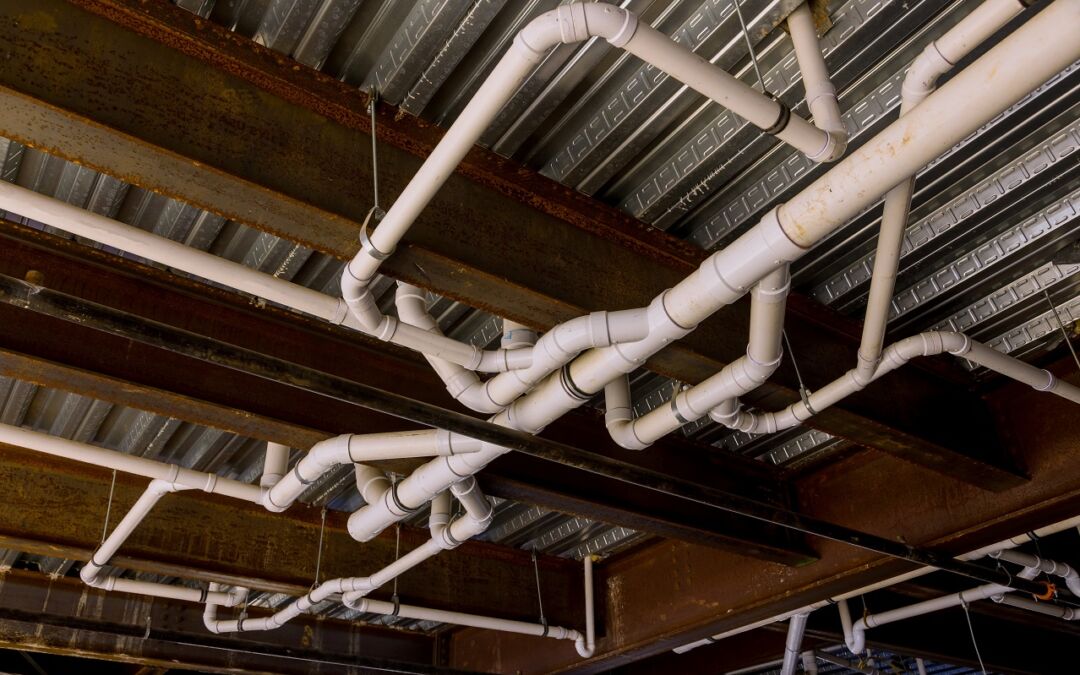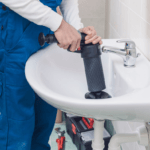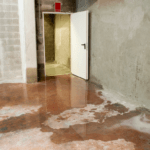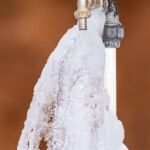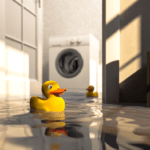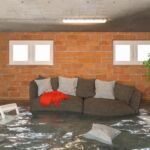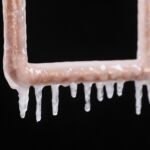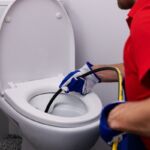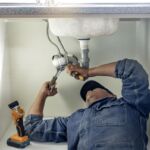The home plumbing system has two subsystems: water supply and drainage. The former brings pressurized water in, while the latter removes wastewater.
Understanding these systems can help a housing inspector recognize plumbing defects. Let’s begin with an overview of each component. Then we’ll move on to the basics of residential plumbing.
Plumbing Systems: The Basics
A residential plumbing system is a complex web of pipes that bring fresh water in, drain wastewater out, and connect all the fixtures in your home. A casual gaze at its interwoven mesh may make it seem overwhelming, but understanding the basics will help you navigate it like a pro.
City water enters your house through a huge pipe called the main. It is usually buried underground and made from copper, cast iron or galvanized steel. There are bridges over it all around your home that link your water service line to your plumbing pipes. These are called fixtures and include faucets, toilets, showers and dishwashers. As clean water enters a fixture, wastewater leaves through a downward-angled pipe called a drainpipe. This carries the waste to your sewer line.
Water Supply
The water supply system carries fresh, clean drinking water throughout the home, using pipes that can be made of copper, galvanized steel or PVC. These pipes can be buried underground, running under floors or between walls.
The water supply is typically connected to a water meter by the curb stop and to the city main by a service line. If a connection to another water source is desired, an application must be made to your municipal Water Department.
Water Filtration Systems
Water filtration systems remove contaminants from the water that enters your home, making it cleaner and safer to drink and use for other household purposes. These can include systems that can be attached to faucets or installed under the sink and plugged into any tap to provide filtered drinking water at the touch of a button. Only accredited professional plumbers should handle the installation, maintenance and repair of these systems.
All water pumps, tanks, wells, storage containers and other equipment containing potable water shall be effectively protected from contamination by means of covers, guards, copings and casings. They also need to be adequately insulated to prevent freezing and melting of the water supply piping in cold weather.
Water Heater
The water heater is another crucial component of your plumbing system. The tank itself is filled with a mixture of sediment, including scale, rust and bits of corroded anode that build up over time. This is why it’s important to have a drain valve on the bottom of your water heater to drain sediment from the tank periodically, e.g. every six months.
There is also a temperature control valve on the hot water service line to raise or lower the temperature of your water. This is typically set at 50 degrees Celsius and is generally the same as your hot water heater’s setting.
Drainage
Drain-Waste-Vent systems, or DWV, are responsible for the networks of drains that take waste away from fixtures and into the sewer system. They also work to keep the proper balance of pressure and air in the plumbing system, working to prevent drain clogs or wastewater back-ups.
In the past, most drainage was done through open drains that took up large amounts of land. However, newer drainage systems are often constructed with buried pipe drains that do not use any of the land and are more environmentally friendly. It is still important to maintain your sewer clean-out so that you can clear out the drain line from time to time.
Many homeowners don’t give a lot of thought to the drain and waste system until something goes wrong! A clogged shower or drain can be quite disruptive to daily life and requires fast action to remedy. Fortunately, South Eastern Ontario emergency plumbers are available on-call 24/7 with Tap Tech.
Call today at 343-305-1172.
Septic System
A septic system is an on-site sewage treatment system that handles household waste in areas where public sewer is not available. It consists of a house sewer drain, septic tank, and soil absorption field (or drain field). This system is designed to treat and dispose of wastewater without contamination, bad odours, or affecting the inhabitants’ health. A septic system is a great alternative to a sewer system for rural or remote areas where the cost and regulations of connecting to the main line are prohibitive.
A house sewer line collects all the discharge from toilets, showers, sinks, and other fixtures and connects to the septic tank. The septic tank holds the wastewater and allows it to separate into three layers. The floatable organic matter, such as grease and oils, floats to the top and forms a layer called scum. The heavier solids settle to the bottom of the tank and form a layer known as sludge. The liquid portion of the wastewater, called effluent, exits the septic tank into the drain field.
The septic tank also contains a vent that permits gasses to escape. The septic tank should be inspected and pumped regularly. When the septic tank is full, the liquid waste may enter the drain field and cause a back-up or overflow of sewage into the home. The drain field is a series of trenches, perforated pipes, or chambers where the “effluent” is slowly released into the soil to be absorbed by bacteria and other microorganisms. The soil then naturally breaks down the contaminants.
Septic Tank Maintenance
A properly sized and installed septic system should last for many years. However, septic systems can fail when they are not properly maintained. If you have questions about a septic system, contact a licensed professional who can inspect your tank, measure the tank layers, and pump it out as needed.
It is generally recommended that you have your septic tank pumped every two to three years to ensure that the solids do not build up and block the drain field. A Septage Waste Transporter can also help you maintain a regular schedule of pumping and inspections.
Plumbing Experts in South Eastern Ontario
Contact Tap Tech for 5-star plumbing service with rates immediately provided up-front over the phone. We are available for same-day service, with 24/7 plumbing to quickly resolve your emergencies.
Get in touch today at 343-305-1172.

